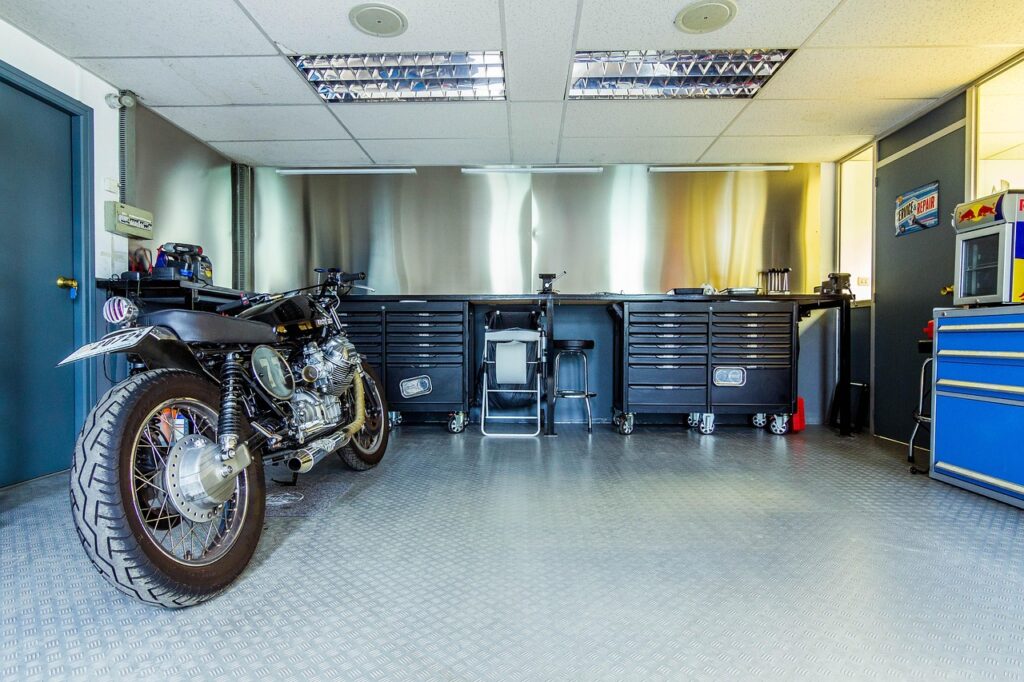Not many homeowners think about building a garage that meets their own vision. More often than not, they see a garage as just a place to park their vehicles. This can be a costly mistake. Building a garage according to their tastes and needs can be rewarding. And just how can they do that? Well, they can always look at getting a custom metal garage kit.
Exploring Custom Metal Garage Kits
Custom metal garage kits are transforming the way homeowners and property developers approach additional storage and workspace solutions. These kits offer flexibility, affordability, and a level of personalization that traditional construction methods often struggle to match. More than just prefabricated structures, they allow property owners to tailor every detail of their garage to meet specific needs. Understanding the process involved in securing a custom metal garage kit can help streamline your planning and ensure the final structure serves its intended purpose with maximum efficiency.
This guide from the experts at Lion Garages delves into each phase of acquiring a custom metal garage kit, from initial planning to final installation. Key elements such as design customization, choosing a reputable supplier, understanding costs, permitting, and construction preparation are all essential to making a sound investment. The aim is to empower you with the knowledge required to navigate the purchase and installation with confidence.
Identifying Your Needs and Vision
The first step in getting a custom metal garage kit is identifying your specific needs. Consider what you want the garage to accommodate. It could be vehicles, tools, recreational equipment, a workshop, or even an additional living area. The intended use will influence many design decisions including size, number of bays, interior configurations, insulation needs, and door placement.
Visualizing your ideal setup helps set the tone for the entire project. Sketch a rough layout or list must-have features such as windows, side entries, skylights, or a loft area. Think about ceiling height, floor space, and ventilation. Knowing what you want from the start ensures a more seamless customization process.
Determining the Size and Layout
The next consideration is size. This depends on your lot’s dimensions, local zoning laws, and the quantity or size of items you want to house in the garage. If you plan to store large vehicles or machinery, a wider span and higher ceiling may be required. If you want to include a workshop or storage loft, additional square footage and height adjustments might be necessary.
Careful measurement of your property will help identify how much space is available and what layout will best fit within those boundaries. Think in terms of both current and future needs. Planning for expansion or adaptation in the design phase saves time and costs down the line.
Selecting the Right Materials and Features
One of the greatest advantages of custom metal garage kits is the ability to select the right materials for your climate and intended use. Steel is the most popular choice due to its strength, longevity, and resistance to pests, fire, and decay. You will need to choose between galvanized steel, which provides excellent corrosion resistance, or other coatings depending on your regional weather conditions.
Options for features are extensive. Consider including reinforced framing, additional insulation, gutter systems, ridge vents, or solar panels. Some owners opt for decorative trims, specialty paint coatings, or even faux wood finishes to match existing structures. Prioritize features based on necessity and budget while leaving room for future upgrades if needed.
Working with a Reputable Manufacturer
Finding a reliable supplier is critical to the success of your project. Research companies that specialize in custom metal building kits and look for a strong track record. Reputable manufacturers will provide detailed specifications, engineering support, and assistance with permits or code compliance.
A good supplier will also walk you through the customization process and offer suggestions based on your intended use and site-specific conditions. Ask for references and review portfolios or completed projects. Transparent pricing, warranty options, and good communication are all signs of a trustworthy company.
Navigating Permits and Local Regulations
Before placing an order, check with your local building authority for necessary permits and restrictions. Every region has its own set of building codes that determine what types of structures can be erected and how they must be constructed. Regulations may cover everything from foundation type to height restrictions, setbacks from property lines, wind load ratings, and snow load requirements.
Working with an experienced supplier or contractor can help ease this process. Many offer pre-engineered kits that already meet regional building codes. Still, it is the responsibility of the property owner to secure the required permits and inspections to avoid penalties and delays.
Understanding the Cost Breakdown
Cost is always a key consideration when planning any construction project. The price of a custom metal garage kit varies depending on size, design complexity, materials, finishes, and labor. Kits generally include prefabricated panels, framing, roofing, doors, and sometimes insulation and windows.
Additional expenses include foundation work, utility installation, permit fees, site grading, and delivery charges. Labor costs for assembling the kit also vary depending on local rates and complexity. To avoid surprises, request a detailed quote and ensure it outlines what is included and what is not. Budget a contingency amount for unforeseen expenses or changes during the build.
Designing for Aesthetics and Practicality
Functionality is essential, but aesthetics also play a role in ensuring your garage adds value to your property. Consider matching the roof pitch, color scheme, and trim of your garage with your home or other nearby structures. Subtle design choices can make a big difference in visual harmony and curb appeal.
Practicality involves ensuring efficient access, natural lighting, and organization. Positioning doors and windows strategically can improve ventilation and usability. Designing interior layouts with workbenches, shelving, or lofts maximizes the available space and enhances the garage’s functionality.
Preparing the Site for Construction
Site preparation is one of the most important stages of the process. The land where your garage will be constructed must be cleared, leveled, and stable. In some cases, soil testing may be necessary to ensure the ground can support the structure’s weight.
Utilities such as electricity and plumbing should be considered at this stage as well. If you plan to install lighting, outlets, or water access, incorporating these into your site plan early can avoid costly modifications later. Drainage and water runoff should also be factored into the layout to prevent erosion or flooding around the garage.
Delivery and Assembly Process
Once the kit has been manufactured and delivered, the assembly process begins. Many property owners choose to hire experienced contractors or builders who specialize in metal buildings to ensure the garage is constructed correctly and efficiently. Although some kits are designed for DIY assembly, help from professionals often results in faster construction and fewer mistakes.
Each part of the kit is labeled and pre-cut, reducing on-site labor and waste. Follow the manufacturer’s instructions precisely, beginning with the foundation anchors, followed by the framing, wall panels, roofing, and finishing touches like windows and trim. Final inspections ensure the structure is safe, aligned, and meets all code requirements.
Enhancing Comfort and Functionality Post Installation
Once your garage is up, you can enhance its usability with added features. Insulation and climate control are particularly valuable if you intend to use the space year-round. Adding ceiling fans, heating units, or air conditioning systems can make the space more comfortable.
For workshops or hobby areas, install task lighting, storage units, and workstations. Flooring options like epoxy coatings can help resist stains and improve appearance. Security enhancements such as smart locks, cameras, and motion lighting can also be added to protect your investment.
Maintenance and Longevity Tips
Metal garage kits require relatively low maintenance compared to wood structures. Still, regular inspections for rust, leaks, or pest intrusion are recommended. Keep gutters and drainage systems clean to prevent water accumulation. Touch up scratched or chipped paint to avoid corrosion.
Lubricate door hinges and check seals around windows and doors to maintain energy efficiency. Performing annual checks helps ensure the structure remains in excellent condition for decades. With proper care, metal garages can last fifty years or more, offering a high return on investment.
Conclusion
A custom metal garage kit offers a flexible, cost-effective way to build a space that fits your exact needs. From the first sketch to final inspection, taking a structured approach to the planning and building process ensures the result will be both functional and visually appealing.
With an understanding of materials, design options, local regulations, and installation steps, you are better equipped to make informed decisions and avoid costly setbacks. A well-executed metal garage not only adds utility but also enhances the value and versatility of your property for years to come.

